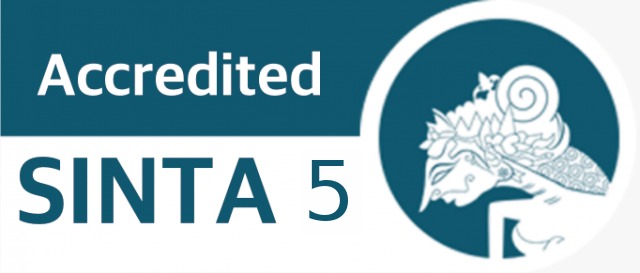UTILIZATION OF THE CERTAINTY FACTOR METHOD TO DIAGNOSE EYE DISEASES
DOI:
https://doi.org/10.61306/jnastek.v3i4.104Kata Kunci:
Eye disease, Certainty Factor, PHP and MySQLAbstrak
In Indonesia, the number of people with eye disease increases every year. The blindness rate of the population in Indonesia is around 1.2% of the total population. People with this eye disease have problems ranging from mild to blind spots. The main causes of blindness are cataracts, corneal disorders, glaucoma, refractive errors, dry eyes, retinal disorders and nutritional disorders. Conjunctivitis, macular degeneration, diabetic retinopathy and other diseases that affect the eyes. As vision, it is necessary to keep the function of the eye from decreasing. As a person ages, the accommodation ability of the eye also decreases. The causes include sitting too long in front of a computer or staring at a cellphone screen for too long, reading a book at a distance that is not within a normal healthy distance, or the presence of dirty air and solar radiation.
Unduhan
Referensi
Abdullah, D., & Nurmala. (2019). Warehouse Goods Inventory Information System at Pt. Bank Aceh Lhokseumawe City. Snti .
Adhar, D. (2017). Implementation of a Web-Based Expert System for Early Diagnosis of Eye Diseases Using the Certainty Factor Method. Jik (Journal of Kaputama Informatics) , 1 (1), 1–6. DOI: https://doi.org/10.59697/jik.v1i1.435
Aryasa, K. (2018). Agribusiness Plant Disease Diagnostic Expert System Using Certainty Factor Method. Journal of Information Systems and Information Technology , 7 (1), 54–67.
Bangun, AW, Erwansyah, K., & Elfritiani, E. (2022). Expert System for Diagnosing Cholesterol Disease in Adolescents Using the Certainty Factor Method. Triguna Dharma Information Systems Journal (Jursi Tgd) , 1 (2), 80. Https://Doi.Org/10.53513/Jursi.V1i2.4910 DOI: https://doi.org/10.53513/jursi.v1i2.4910
Fanny, RR, Hasibuan, NA, & Buulolo, E. (2017). Renalis Uses the Certainty Factor Method with Forward Chaining Search. Media Informatics Budidarma , 1 (1), 13–16.
Gusman, AP, Maulida, D., & Rianti, E. (2019). Expert System for Diagnosing Ovarian Cyst Disease Using the Forward Chaining Method. Journal of Communication and Information , 6 (1), 8–18. https://Doi.Org/10.35134/Komtekinfo.V6i1.37 DOI: https://doi.org/10.29165/komtekinfo.v6i1.146
Haviluddin. (2011). Understanding the use of Uml (Unified Modeling Language). Understanding the Use of Uml (Unified Modeling Language) , 6 (1), 1–15. Https://Informatikamulawarman.Files.Wordpress.Com/2011/10/01-Jurnal-Informatika-Mulawarman-Feb-2011.Pdf
Kurniawan, A. (2019). Expert System for Diagnosing Bird Flu Online Using the Forward Chaining Method. If (Journal of Informatics) , 2 (1), 33–39. https://Doi.Org/10.31000/If.V2i1.1414
Latumakulita, LA (2012). Expert System for Diagnosing Childhood Diseases Using Certainty Factor (Cf). Scientific Journal of Science , 12 (2), 120–126. DOI: https://doi.org/10.35799/jis.12.2.2012.705
Maulana, H. (2016). Analysis and Design of a MySQL Database Replication System Using Vmware on an Open Source Operating System. Infotekjar (National Journal of Informatics and Network Technology) , 1 (1), 32–37. Https://Doi.Org/10.30743/Infotekjar.V1i1.37 DOI: https://doi.org/10.30743/infotekjar.v1i1.37
Oktaviansyah, M., Tamara, R., & Fitri, I. (2022). Expert System for Diagnosing Eye Diseases Applying Certainty Factor and Forward Chaining Methods. Budidarma Media Informatics Journal , 6 (1), 645. Https://Doi.Org/10.30865/Mib.V6i1.3542 DOI: https://doi.org/10.30865/mib.v6i1.3542
Prasetyo, DY, Rianto, B., Rais, MS, & Suwanti, N. (2021). Early Diagnosis of Eye Diseases Applying the Case Based Reasoning (CBR) Method. Budidarma Media Informatics Journal , 5 (2), 360. Https://Doi.Org/10.30865/Mib.V5i2.2779 DOI: https://doi.org/10.30865/mib.v5i2.2779
Unduhan
Diterbitkan
Cara Mengutip
Terbitan
Bagian
Lisensi
Hak Cipta (c) 2023 mukti abdul_ghani, Hotler Manurung, Suci Ramadani

Artikel ini berlisensiCreative Commons Attribution-ShareAlike 4.0 International License.
HAK CIPTA
Hak cipta atas artikel apapun pada Jurnal Nasional Teknologi Komputer (JNASTEK) dipegang penuh oleh penulisnya dibawah lisensi Creative Commons Attribution-ShareAlike 4.0 International License.
1. Penulis mengakui bahwa Jurnal Nasional Teknologi Komputer (JNASTEK) berhak sebagai yang mempublikasikan pertama kali dengan lisensi Creative Commons Attribution-ShareAlike 4.0 International License - CC BY-SA.
2. Penulis dapat memasukan tulisan secara terpisah, mengatur distribusi non-ekskulif dari naskah yang telah terbit di jurnal ini kedalam versi yang lain (misal: dikirim ke respository institusi penulis, publikasi kedalam buku, dll), dengan mengakui bahwa naskah telah terbit pertama kali pada Jurnal Nasional Teknologi Komputer (JNASTEK).
LISENSI
Jurnal Nasional Teknologi Komputer (JNASTEK) diterbitkan berdasarkan ketentuan Creative Commons Attribution-ShareAlike 4.0 International License. Lisensi ini mengizinkan setiap orang untuk menyalin dan menyebarluaskan kembali materi ini dalam bentuk atau format apapun, menggubah, mengubah, dan membuat turunan dari materi ini untuk kepentingan apapun, termasuk kepentingan komersial, selama mereka mencantumkan kredit kepada Penulis atas ciptaan asli.




















